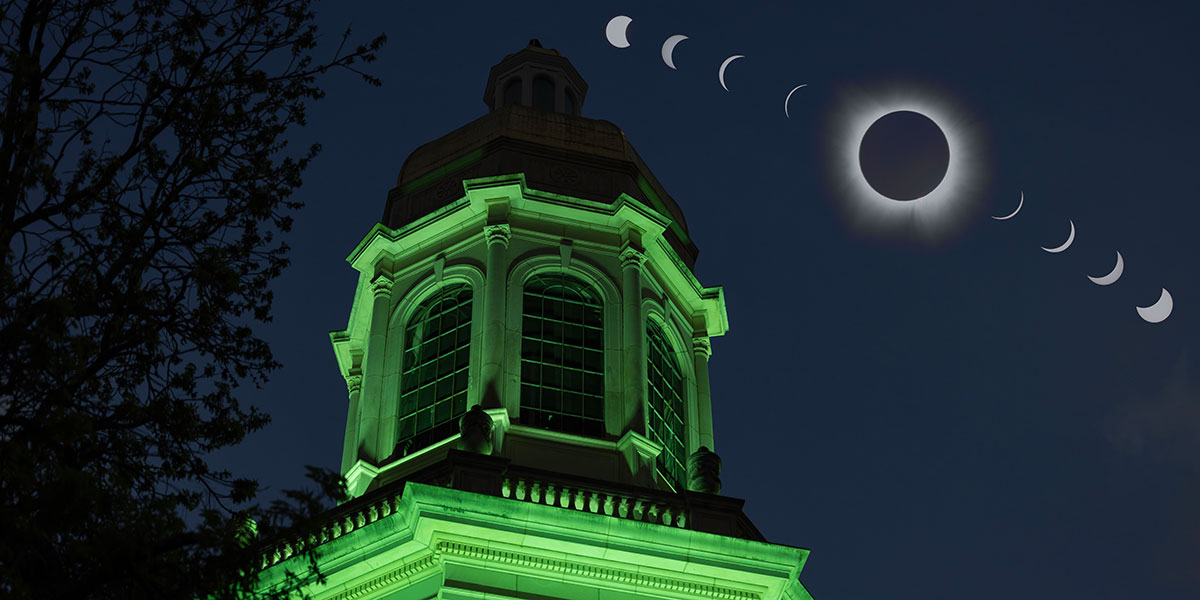Baylor physics profs explain some of the eclipse phenomena we saw Monday

A few days have passed since the total solar eclipse that drew the campus together on Diadeloso and lured 14,000 visitors to McLane Stadium. The memories of the experience will linger in the minds of all who were there — the colors of the sky, the drop in temperature, and the sense of nightfall in the middle of the day.
During Eclipse Over Texas on Monday, 50+ representatives of Baylor’s Department of Physics were on hand at McLane Stadium to assist and educate those in attendance. We asked a couple of them — Dr. Lorin Swint Matthews (BS ’94, PhD ’98) and Dr. Barbara Castainheria Endl — to help us understand what we saw during the eclipse.
Among the event’s highlights:
Corona: This is the sun’s outer atmosphere, which normally can’t be seen due to the sun’s brightness, but is visible as an outer ring during a total solar eclipse. If you were able to view the 2017 eclipse, this version looked a little bit different.
“The solar corona was smaller and less pronounced than in 2017 because we are at solar maximum, which means there are more sunspots and solar prominences,” says Matthews. “The 2017 eclipse was near solar minimum — fewer sunspots, but bigger corona.”
But don’t let the smaller corona bother you, because we saw something you couldn’t see in 2017…
Prominences: Did you notice brightly colored red spots around the moon? These are prominences — large bright plasma features that extend outward from the sun.
“The prominences were not visible in the 2017 eclipse, but this time they were because the sun is close to the peak of its activity cycle,” explains Endl.
Jupiter and Venus: Those two bright stars you may have seen to either side of the sun were not actually stars, but planets made visible in the daytime by the eclipse. Jupiter was to the left of the moon, and Venus to the right.
360-Degree Sunset: Unfortunately, clouds prevented us in Waco from fully seeing this phenomena, but the effect was visible in some other parts of the country.
As most of us watched safely through our glasses, Baylor physics researchers were also pointing telescopes at the eclipse from first to last contact, viewing sunspots and seeing in greater detail a natural wonder they’ll continue to study in the years ahead — helping scientists better understand the factors that lead to them, and making them easier to understand for the rest of us.
Sic ’em, Baylor Physics!

